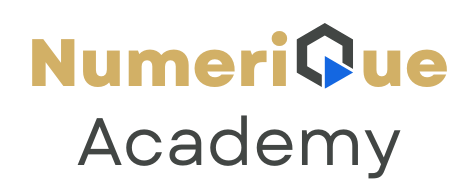Are you all set to build your first website? Whether you are a beginner, an entrepreneur, or a person who is just keen on how website development works, building one from the ground up using HTML, CSS, and JavaScript is a great way to begin.
In this guide, we’ll walk you through the entire process—from setting up your project to putting your site live on the internet. No frameworks. No fancy tools. Just pure web development fundamentals.
Step 1: Set Up Your Tools
Before we write a single line of code, here’s what you need:
Text Editor
Use Visual Studio Code (VS Code). It’s free, beginner-friendly, and packed with features.
Web Browser
Google Chrome is recommended, especially for its Developer Tools, but any modern browser will work.
Step 2: Understand the Core Web Trio
To build a website, you need to understand the 3 pillars of the web:
- HTML (HyperText Markup Language) – Structure of your website
- CSS (Cascading Style Sheets) – Styling and layout
- JavaScript – Interactivity and behavior
Step 3: Create Your Project Folder
- Create a new folder on your computer:
my-first-website - Inside the folder, create three files:
- index.html
- style.css
- script.js
Step 4: Write Your First HTML
Open index.html and add the following:
<!DOCTYPE html>
<html lang=”en”>
<head>
<meta charset=”UTF-8″>
<title>My First Website</title>
<link rel=”stylesheet” href=”style.css”>
</head>
<body>
<h1>Welcome to My Website</h1>
<p>This is my first attempt at building a site from scratch!</p>
<button id=”clickMe”>Click Me</button>
<script src=”script.js”></script>
</body>
</html>
Explanation:
- <!DOCTYPE html> tells the browser this is an HTML5 document.
- The <head> section includes the title and links the CSS file.
- The <body> section holds the content and links the JS file.
Step 5: Add Some CSS Styling
Open style.css and add:
body {
font-family: Arial, sans-serif;
text-align: center;
padding: 50px;
background-color: #f9f9f9;
}
h1 {
color: #333;
}
button {
padding: 10px 20px;
font-size: 16px;
background-color: #008CBA;
color: white;
border: none;
border-radius: 5px;
cursor: pointer;
}
button:hover {
background-color: #005f73;
}
Explanation:
- The body is styled for spacing and font.
- The button changes color when hovered over for a better user experience.
Step 6: Add Some JavaScript Interactivity
Open script.js and add:
document.getElementById(‘clickMe’).addEventListener(‘click’, function () {
alert(‘You clicked the button!’);
});
Explanation:
- This script waits for a button click and shows an alert.
- It demonstrates how JavaScript interacts with HTML elements.
Step 7: Open Your Site in the Browser
- Right-click on index.html and choose “Open with” → Your Browser.
- You should see your heading, paragraph, and button.
- Click the button—it works!
Step 8: Optional – Add More Features
Want to keep going? Try adding:
- An image (<img> tag)
- A list of your hobbies (<ul> and <li>)
- A form with inputs
- More advanced JS like form validation or changing text dynamically
Step 9: Make It Responsive (Basic Tip)
Add this line inside your <head> tag for better mobile support:
<meta name=”viewport” content=”width=device-width, initial-scale=1.0″>
And use relative units (%, rem) and media queries in CSS if you want to get serious about responsiveness.
Step 10: Deploy Your Website for Free
You built it, now it’s time to share it with the world!
Option 1: GitHub Pages
- Create a GitHub account and repo
- Upload your files
- Go to repo settings → Pages → Select main branch → Save
- Your site is live at https://yourusername.github.io/your-repo-name
Option 2: Netlify
- Create a free Netlify account
- Drag and drop your folder onto the dashboard
- Done. Instant URL.
Final Thoughts
Building your first website from scratch is like learning to ride a bike. It might feel tricky at first, but once you get the hang of it, the possibilities are endless.
You just wrote HTML for structure, CSS for styling, and JavaScript for interactivity. You’ve got the core ingredients of every website out there.
Next up? Learn about layout techniques (Flexbox & Grid), start using version control (Git), and explore frameworks like React or Vue when you’re ready.

